
This is an example of the ready-made spreadsheet template that will help import stock data. Paste data into this table (matching the legacy database with the Jim2 stock fields).
 |
Always test importing data in the Training database first! |
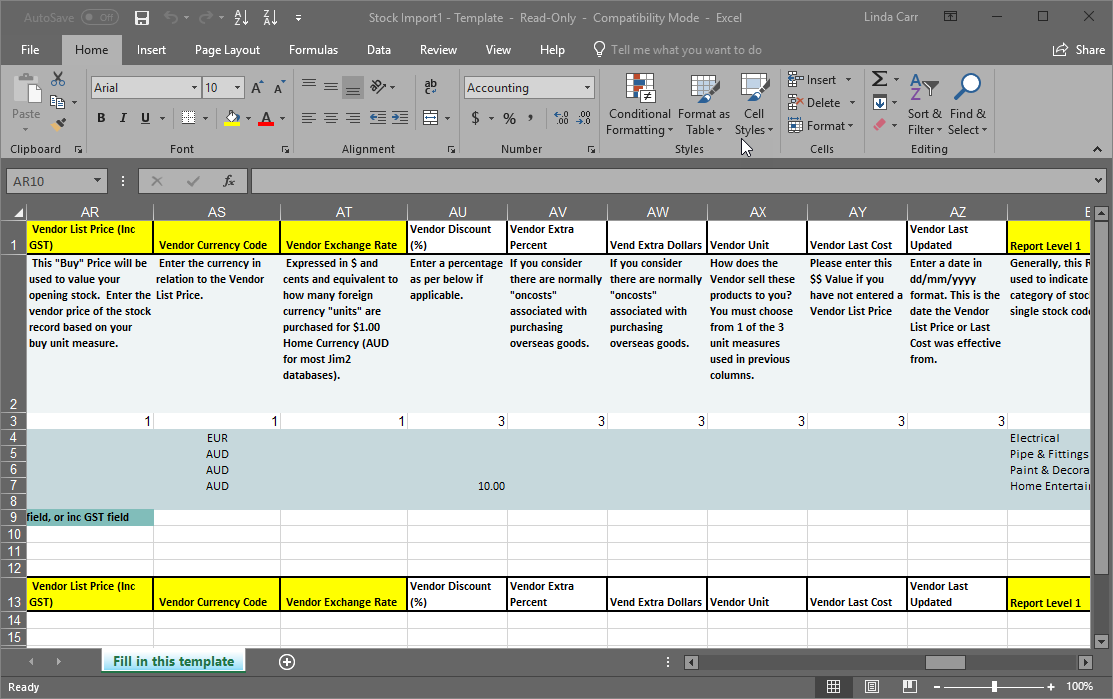
Not all fields are showing in this image
See Preparing Stock first.
 |
All yellow highlighted fields must be populated. |
Save the template as a spreadsheet file (XLSX) and close it.
It is best when doing the import (for speed and good database practice) to choose a reasonably quick machine/server and not have users actually logged on to the database. It is not necessary to log all users out, however.

On the ribbon, go to Tools > Import Data.
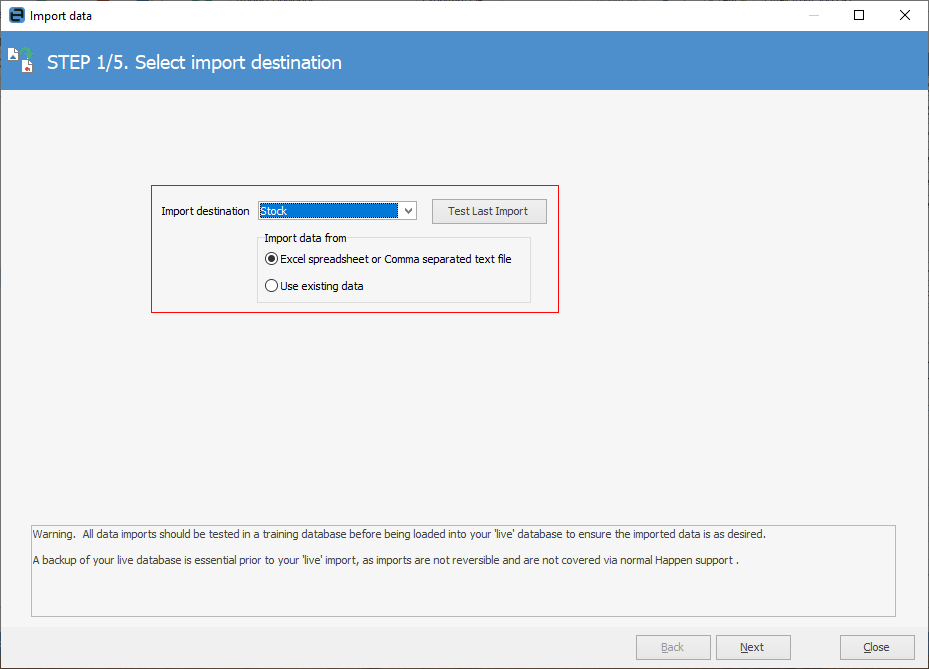
Select the following:
Import destination: Stock.
Import data from: the spreadsheet file saved earlier.
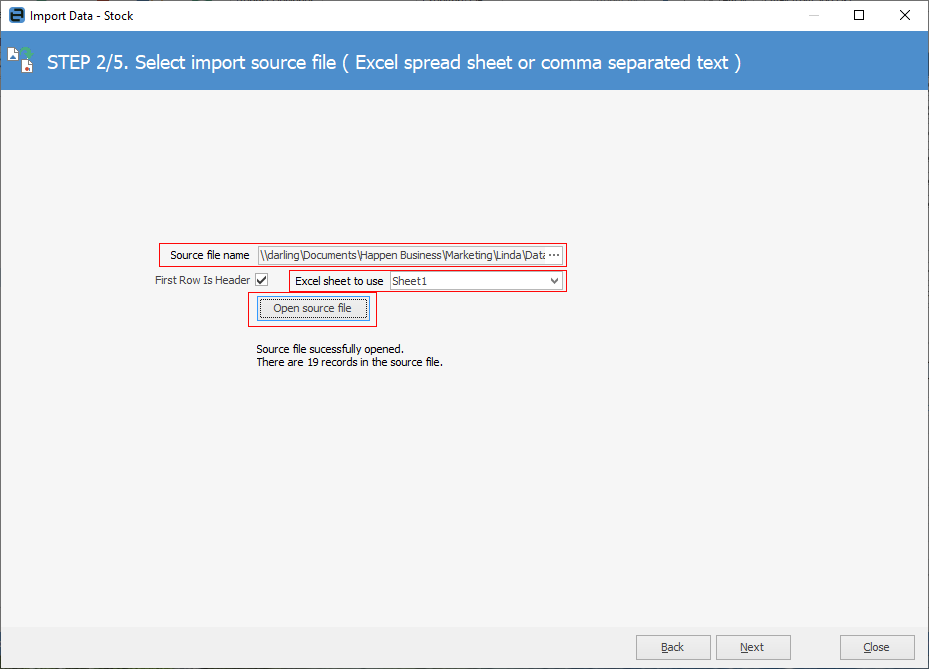
Source File Name: Where the saved spreadsheet stock template is.
Click Open Source File for Jim2 to test opening this file and count the number of records to import.
Select the correct sheet from the spreadsheet to use.
Click Next.
 |
If you receive a warning stating Too many columns, copy only populated cells into a new spreadsheet and try again. |
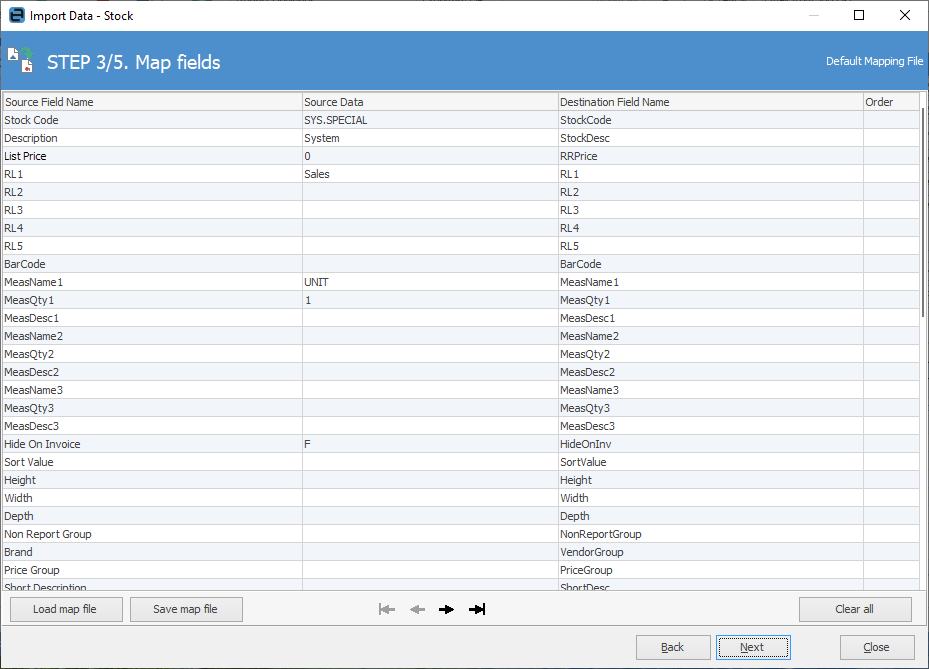
If the template has been followed correctly, the fields should match already. The Map Fields function is very simple to use. The Source Field reads from the spreadsheet field headers, then loads a sample of data from the first record row.
If there is not a lot of data in the first record, use the arrows at the bottom of the screen to get Jim2 to read from any subsequent record to see a sampling of the data, and be sure the fields are matching up correctly.

From the dropdown list in the Destination Field Name column, select the corresponding field in Jim2:
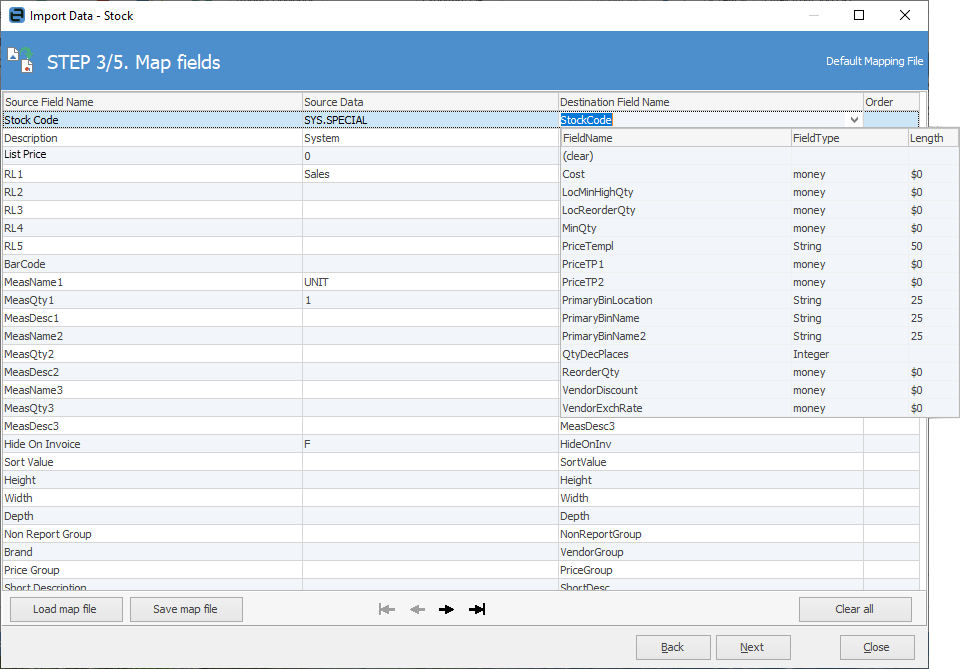
Previous mapping can be loaded up (think of them as pointer files for Jim2), or the mapping file can be saved for future import. This is useful if an earlier import attempt of this file failed, and changes were made to Jim2 setups (not stock data). Use existing data for subsequent import attempts can then be utilised.

 |
The mapping file only saves the mapping from one field to another – not the actual data being mapped itself. The mapping file saves having to choose from all the dropdown lists again, however spreadsheet data files will still be needed for import. |
After the fields have been mapped, click Next.
Click Load data from file for Jim2 to load the data from the spreadsheet and test it.
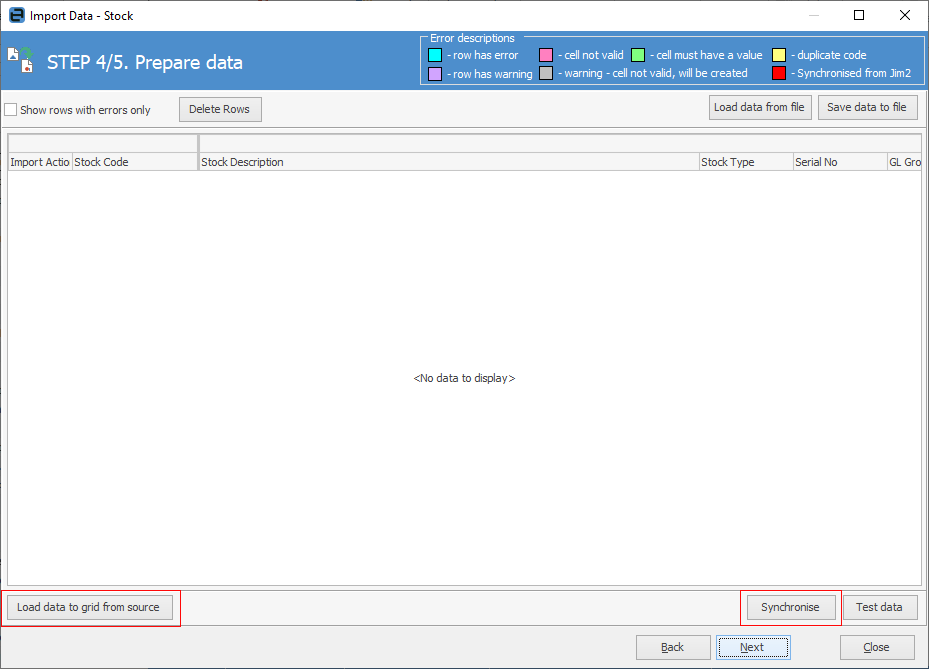
Jim2 will colour code anything that is erroneous – see Error descriptions (top right in image below).
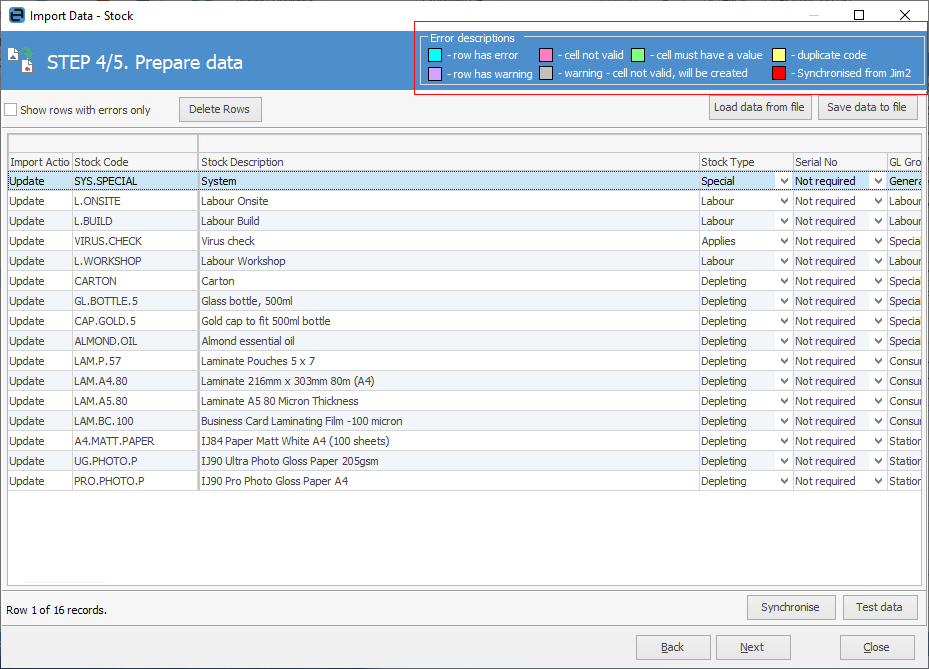
|
When importing stock, current and new report level groups can be included. If the cell background is coloured grey, this means these new report levels will be added to Jim2. It can also highlight spelling/typographical errors in the group name if the group already exists. |

Use the dropdown list to select the values required to fix the record. After fixing any erroneous records, click Test Data for Jim2 to check the records again.
 |
If corrections are made within the following screen, there is no point saving the mapping file. Therefore, if it is necessary to save a mapping file, it is best to amend the spreadsheet instead. |
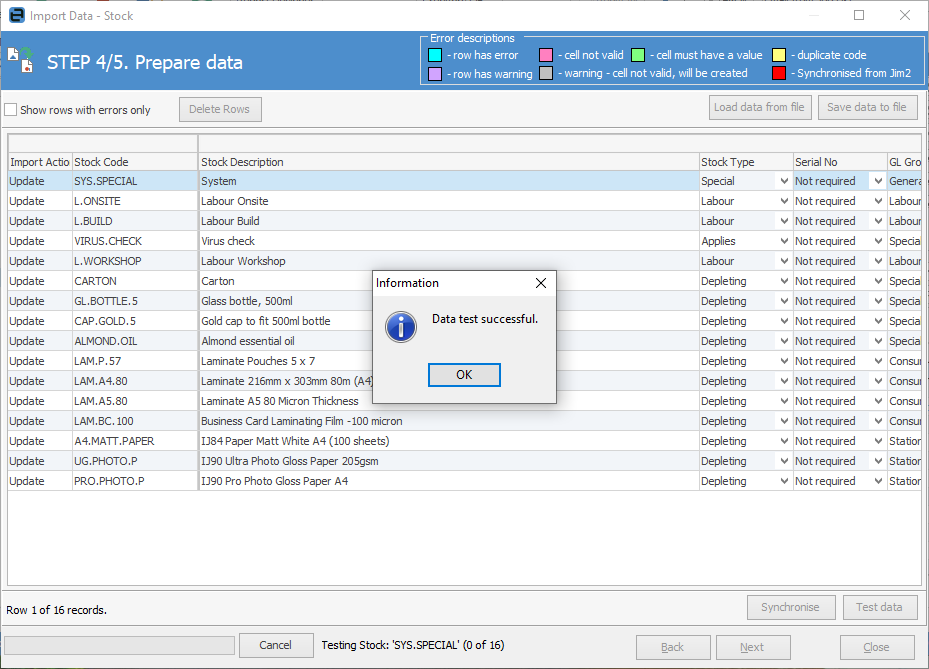
The data test is successful, so click Synchronise, to fills in any missing data that a default is set for will be filled in, then click Next to continue.
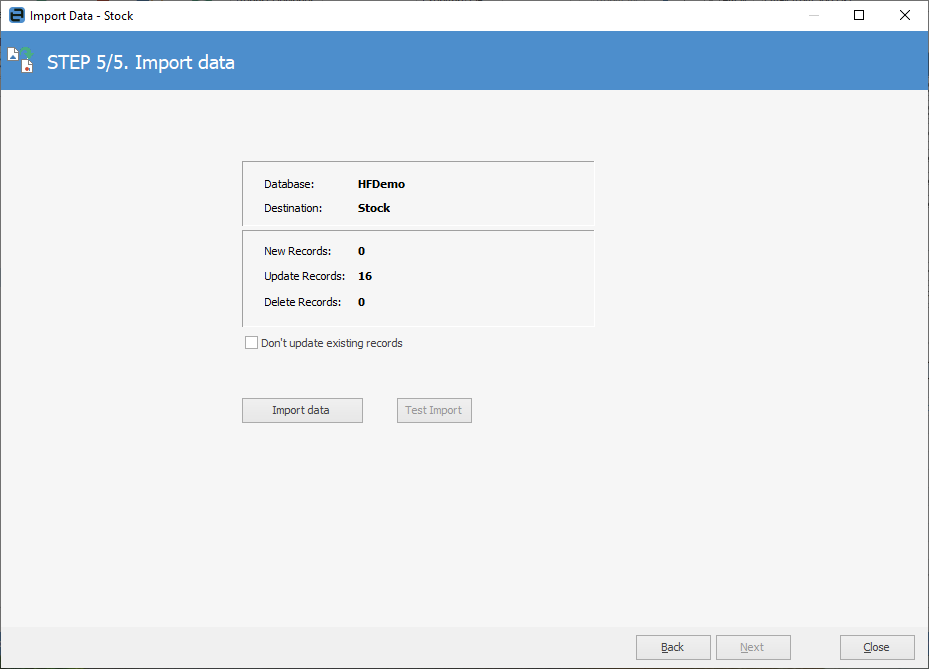
Up to now the data has only been tested, not actually imported. From this screen, Jim2 will confirm once again what database and section to import to, as well as the number of records being imported. Choose whether to update existing records (overwrite) or not by ticking/unticking Don't update existing records.
When ready, click Import data.
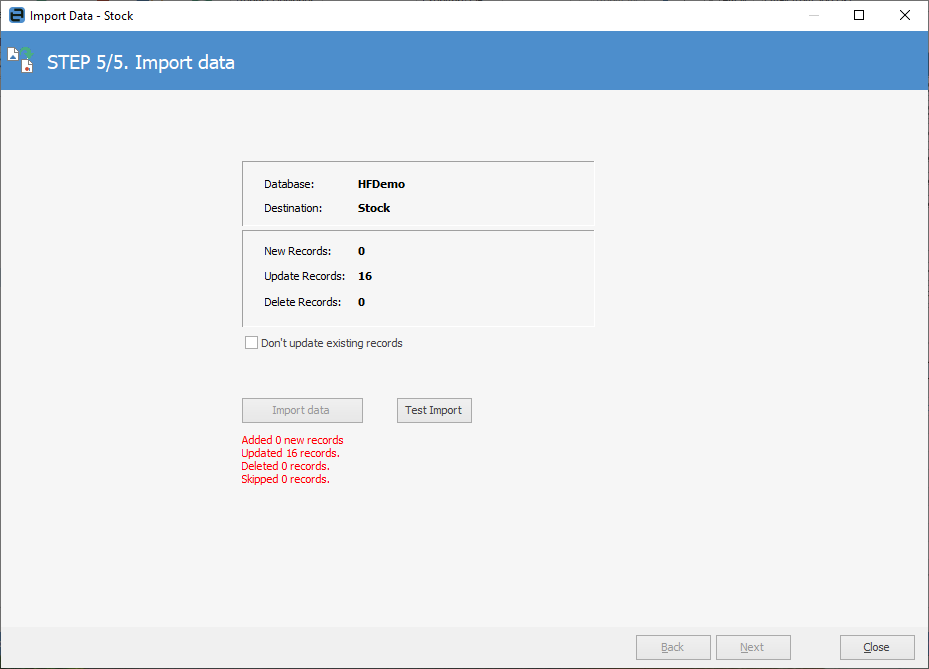
Jim2 will confirm how many records were added/updated, etc.
Click Close to exit the Import Wizard.
Further information